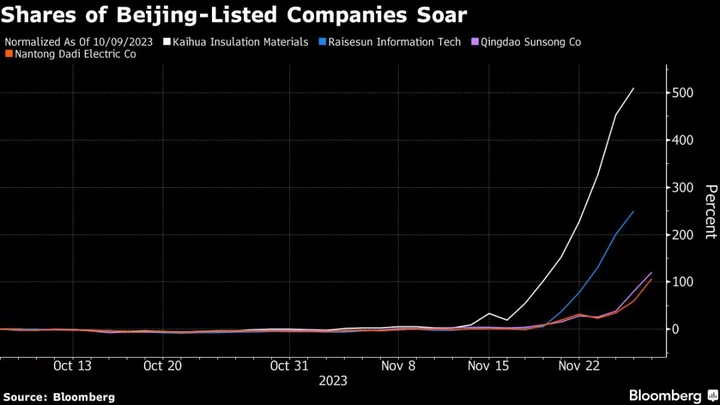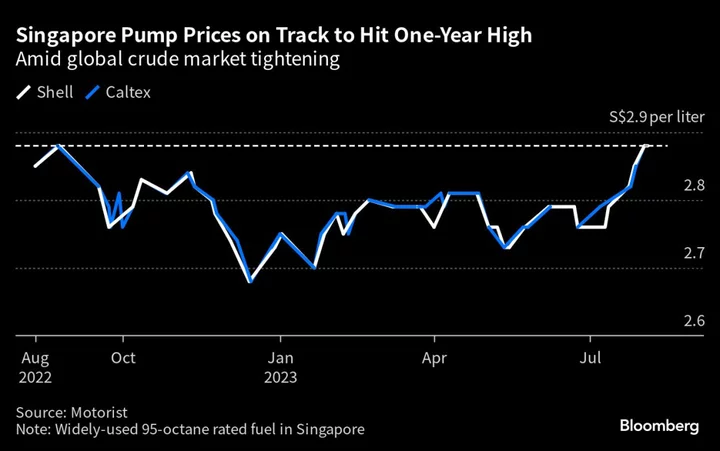Investors desperate for returns in China’s lackluster equities are scooping up some of the smallest and most volatile stocks, sparking a $25 billion rally in one corner of the market in a little over a month.
The Beijing Stock Exchange 50 Index, a gauge of early-stage innovative companies listed in the capital, has gained nearly 50% since its Oct. 23 low. Volumes on the measure, which attracted little interest since its launch in November 2022, have surged in recent weeks and are now catching the attention of financial authorities.
The Beijing bourse on Monday vowed to tighten supervision and issued warnings against abnormal trading activities, spurring a 4.2% decline in the gauge in Tuesday’s session. Still, the relative strength index for the measure remains in overbought territory.
“Stocks on the Beijing exchange are not expensive and have a smaller float, making their shares easier to lift,” said Zhou Nan, managing director at Shenzhen Long Hui Fund. “Even though there might be another spike in share prices, because these firms suffer from poor market liquidity, investors are at great risk of being left holding the bag when the music stops.”
The gains are in sharp contrast to declines across the rest of China’s stock market. The CSI 300 benchmark of shares in Shenzhen and Shanghai is set to decline for a fourth straight month as investors remain wary of a weak economic outlook and volatile earnings.
This points to the vulnerability of the Beijing Stock Exchange 50 Index’s sharp advance, especially as some key stakeholders are taking profit.
The rally of late has been attributed to investors’ light positioning on the Beijing exchange. The bourse was launched in November 2021 to broaden financing channels for “little giants” or early stage companies with innovative potential, meant to further China’s technology ambitions. Other catalysts include regulators encouraging mutual funds to buy more shares on the board and authorities’ consideration to get some of the stocks into the main CSI indexes.
A wider fluctuation range of 30% allowed for the Beijing gauge’s constituents — compared to as much as 20% for the Shanghai and Shenzhen indexes — has driven volatility, and can translate into a bigger plunge once momentum fades.
Strong retail interest, however, suggests any dips may lure those who have been waiting on the sidelines to ride the frenzy. The WeChat index — which aggregates searches on the social media platform — suggests interest for “Beijing Stock Exchange” has jumped nearly 40-fold since a month ago.
Turnover on the Beijing exchange soared to over 30 billion yuan ($4.2 billion) on Monday — exceeding the total for each of the preceding five months, according to data from the bourse. It has a total 232 firms listed, with the largest of them including Shanxi Jinbo Bio-Pharmaceutical Co., which makes functional protein, and BTR New Material Group Co., which manufacturers materials used in lithium batteries.
The companies listed on the exchange have not been made available to foreign investors via the trading links with Hong Kong.
(Updates chart, prices as of market close.)









